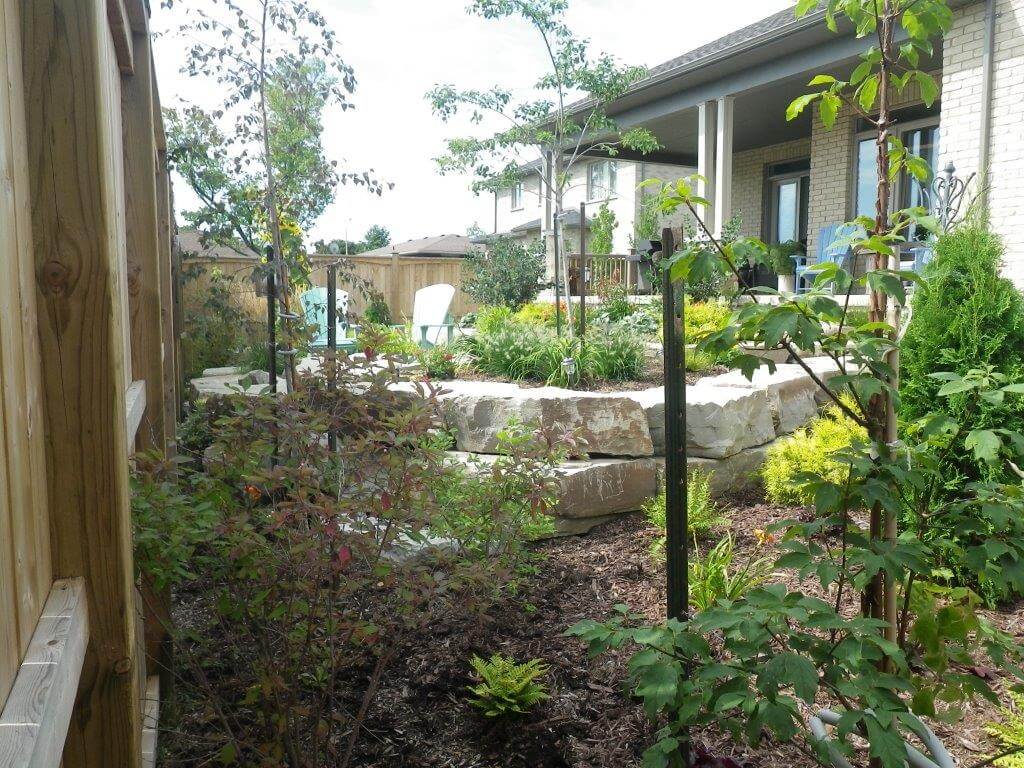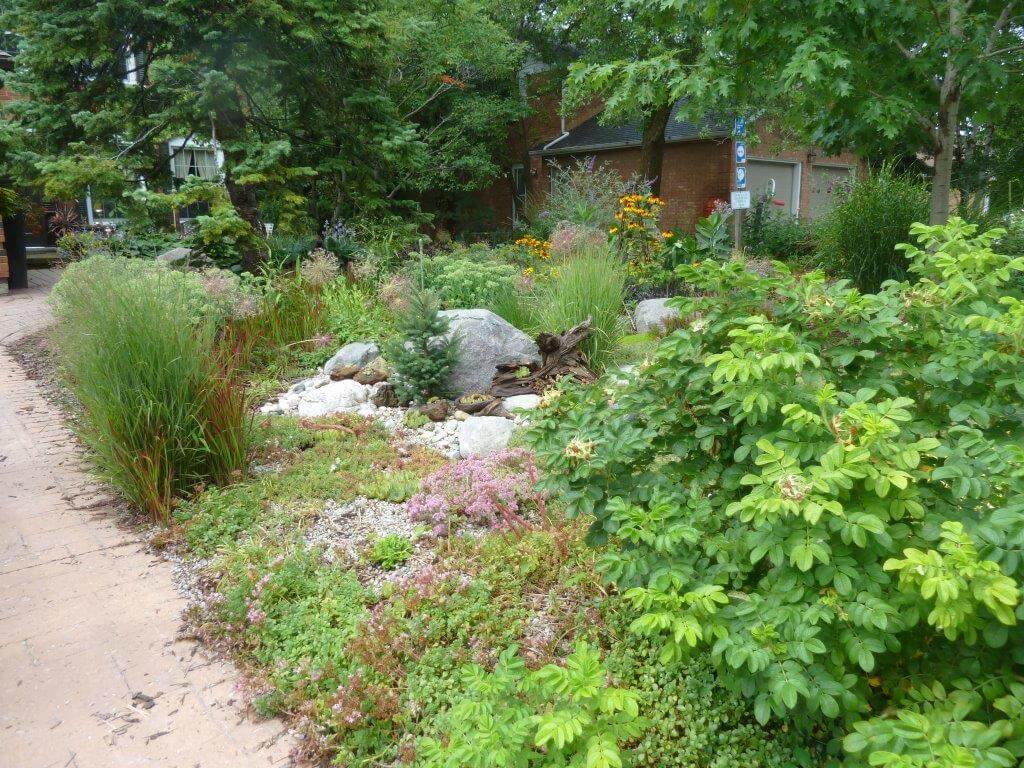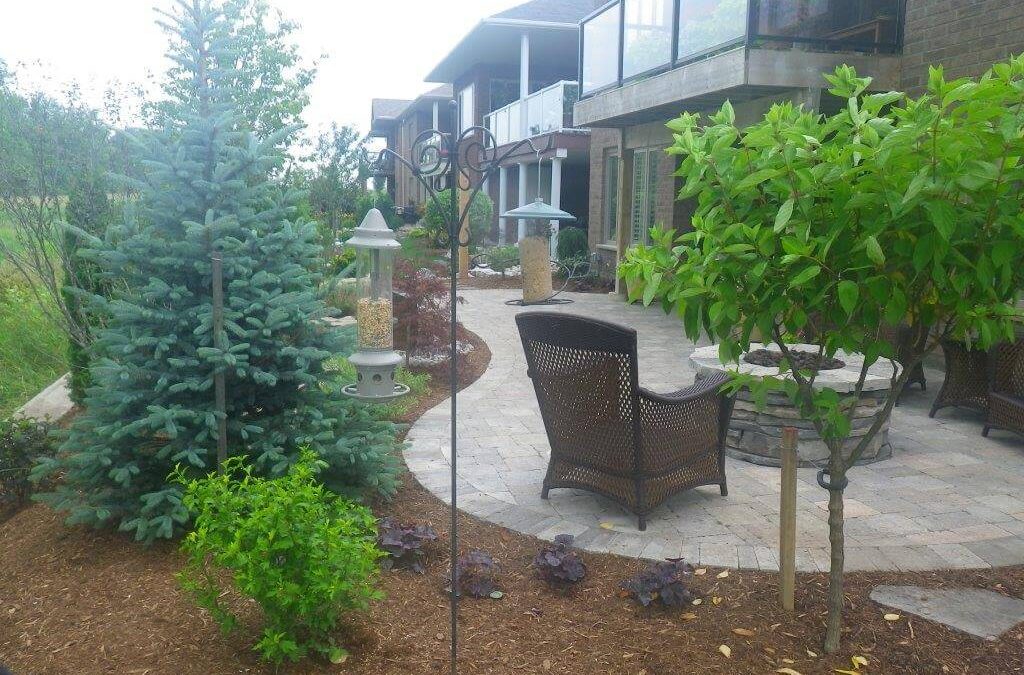What to expect with low-maintenance landscaping
When we’re consulting with clients about their goals for new landscaping projects, by far the most requested characteristic is “low-maintenance”. But keep in mind that “low-maintenance” doesn’t mean “no maintenance”, so there’s still some work involved in keeping your lawn and garden looking great all season long.
If you’re looking to minimize the amount of work your lawn and flowerbeds need, we’ve got some tips that will allow you to spend more time enjoying your outdoor living spaces and less time maintaining them.
The Low-Maintenance Lawn
It may surprise you to learn that your lawn generally requires a lot more time to maintain that gardens do. Weeding, feeding, seeding, sodding, cutting, trimming, and watering all repeatedly require time, effort, and resources.
As such, the first thing we recommend doing is considering how much lawn you need for your lifestyle. While grass-covered turf does offer certain environmental benefits like absorbing toxins and carbon dioxide, other landscaping options can be just as beneficial. Chances are you can drastically reduce the amount of grass in your yard and replace those areas with other, much lower-maintenance elements.
One sure-fire way to reduce high-maintenance grass is to add some hardscaping to your yard. In addition to your driveway, porch, and deck, you might consider expanding your living space with a stone patio, fire pit area, and/or walkways. Adding crushed stone and pavers to high-traffic areas can significantly reduce maintenance while improving draining and weed control.

Trees
Large trees may require some maintenance in the form of trimming and/or raking leaves, but they offer many aesthetic and environmental benefits.
If you plan to add trees, give them a wide skirt of exposed earth (out to the drip line) and mulch well. This not only looks good, but furthers the reduction of grass that would otherwise need to be maintained.
Plant Selection
We’re fortunate to have myriad options when it comes to plants, flowers, and shrubs. However, if your goal is low-maintenance landscaping, you’ll want to be selective.
First and foremost, you can ensure the lowest maintenance gardens by choosing plants that are native to your region. These plants thrive in your region’s climate and soils, and historically have grown in the wild with no one but Mother Nature maintaining them. So you can bet they’ll thrive in your garden without too much attention.
Favour perennials over annuals. While the latter tend to be showier, they require more maintenance (deadheading and watering) and need to be replaced every year, adding both time and expense to your gardening requirements. To add pops of colour to your porch and patio but keep maintenance manageable, plant annuals in large containers.

It’s important to consider sun exposure when selecting plants – both annuals and perennials – for gardens and planters. Shade-loving plants will become scorched in anything other than morning sunlight. Sun-lovers planted in the shade will not reach their full potential and will get “leggy” reaching for the sun.
While it’s visually appealing to choose a variety of shapes, sizes, and textures, be sure to select plants for your garden that have similar needs. This will help you avoid having to care for plants individually, permitting you instead to apply what maintenance is required to all plants in your garden.
Beautiful plants come from healthy soil. Soils that are rich in nutrients with good drainage and low competition from weeds will foster healthy plants without much assistance.
Good quality compost adds a wide range of nutrients and healthy bacteria to soil, and can also ensure appropriate drainage. Peat moss can also improve drainage but has an acidic pH. Raised beds also drain better than those dug down into the ground. Finally, a thick layer of mulch will help reduce watering requirements and minimize weed growth. Topped up every spring, mulch also feeds the soil and adds a polished look to flower beds and gardens.
Here in Southwestern Ontario, our outdoor living season is short, so maximize enjoyment by minimizing your work. Consider where you spend the bulk of your time and effort outside and determine ways to reduce or eliminate it so you can spend more time basking in our summer weather, while it lasts.

